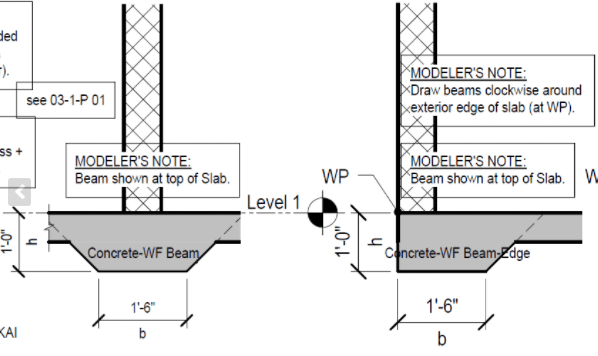user277418
Structural
- Jul 11, 2017
- 86
Hi
Designing a slab on piles. The slab has downward thickenings under heavy/load-bearing walls and on edges. Some sort of these, but larger![[smile] [smile] [smile]](/data/assets/smilies/smile.gif) (the image is only an example from internet)
(the image is only an example from internet)

Approx. slab dimensions are 45 x 30 m and thickness is 250 mm. Thickenings are Height x Width = 330 x 800 mm approx. When the slab is going to shrink the piles are going to create some restrain. As to calculate directly amount of the restraint, as well as size and location of cracks due to the restraint is very complicated, minimum reinforcement must be provided. Quantity of the minimum reinforcement depends on concrete cross-section area in tension, thus in the thickenings it rises up drastically. My supervisor said he never met such quantity of reinforcement in slabs on piles, but could not find any mistake in my calculations. To recheck myself I have tried 3 methods from different codes, standards and recommendations. All of them are giving close results. Looked through few respected books about foundations and met pretty small quantities of reinforcement there. In examples restrained shrinkage mentioned in a way of a suggestion to account it if needed, but not accounted.
So I would appreciate if you could give some references on trusted literature or share your experience on the topic.
Questions on which I am looking for answers:
1. Are there any construction methods to mitigate the effect of shrinkage? I know few for silos, but have doubts that they may be applicable in the case. Besides large portion of shrinkage is going to appear long after the construction will be finished.
2. Maybe I am missing something in the calculation? My assumption is, if the restraint is enough, whole cross-section is going to be in tension. Some reduction/redistribution factors according to codes are applied, but they don't save the situation.
PS: sorry for my English, just in case
Best regards
Designing a slab on piles. The slab has downward thickenings under heavy/load-bearing walls and on edges. Some sort of these, but larger
![[smile] [smile] [smile]](/data/assets/smilies/smile.gif) (the image is only an example from internet)
(the image is only an example from internet)
Approx. slab dimensions are 45 x 30 m and thickness is 250 mm. Thickenings are Height x Width = 330 x 800 mm approx. When the slab is going to shrink the piles are going to create some restrain. As to calculate directly amount of the restraint, as well as size and location of cracks due to the restraint is very complicated, minimum reinforcement must be provided. Quantity of the minimum reinforcement depends on concrete cross-section area in tension, thus in the thickenings it rises up drastically. My supervisor said he never met such quantity of reinforcement in slabs on piles, but could not find any mistake in my calculations. To recheck myself I have tried 3 methods from different codes, standards and recommendations. All of them are giving close results. Looked through few respected books about foundations and met pretty small quantities of reinforcement there. In examples restrained shrinkage mentioned in a way of a suggestion to account it if needed, but not accounted.
So I would appreciate if you could give some references on trusted literature or share your experience on the topic.
Questions on which I am looking for answers:
1. Are there any construction methods to mitigate the effect of shrinkage? I know few for silos, but have doubts that they may be applicable in the case. Besides large portion of shrinkage is going to appear long after the construction will be finished.
2. Maybe I am missing something in the calculation? My assumption is, if the restraint is enough, whole cross-section is going to be in tension. Some reduction/redistribution factors according to codes are applied, but they don't save the situation.
PS: sorry for my English, just in case
Best regards

